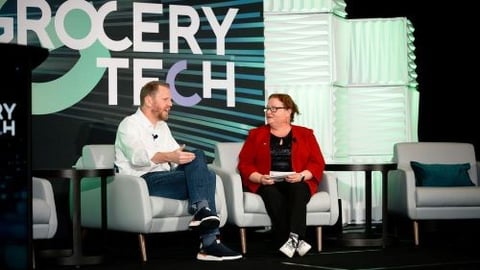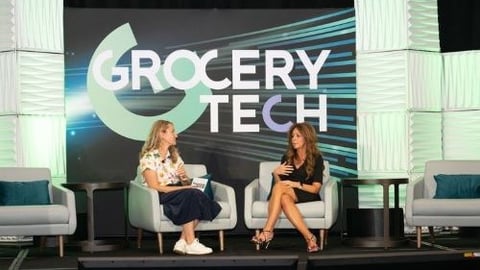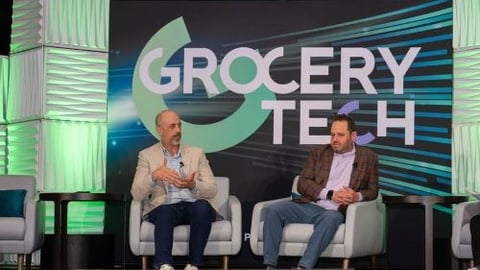How Giant Food Keeps Value-Seeking Shoppers Coming Back in an Era of Loyalty Fatigue
“It’s not you, it’s me. But it's mostly you because I can't afford you.”
That’s a shopper sentiment that likely rings true with many retailers today. Even the most loyal grocery shopper is prone to fickleness, making loyalty more elusive and valuable than ever.
In a push to get grocers thinking differently, Ryan Draude, head of loyalty and digital at Giant Food, drew from his background in hospitality to share repeatable loyalty frameworks at Progressive Grocer’s GroceryTech event last week in Dallas.
Urging attendees to get out of the “sea of sameness,” Draude acknowledged that while many retailers already use such foundational elements as point systems, today’s pressurized environment requires different approaches for better results.
Today’s era is value-driven, he stressed, and whether that’s from inflation, higher prices or out-of-stocks, shoppers want savings in historic ways.
Giant, an Ahold Delhaize banner that operates 164 retail stores, segments its customers by average spend, visit frequency and category mix. While securing the high-frequency, high-spend customers may be the most desirable, the reality is more shoppers today spread out their trips, he said.
Although trips are increasing, average order volume isn’t following suit, and value-driven shoppers are willing to shop at an average of 3.3 grocery brands, according to Draude.
“Grocery shoppers, pardon my expression, are very promiscuous, in the sense that they get around,” he noted.
Sea of Sameness
Many grocery loyalty programs lean on such incentives as item discounts and fuel or charity partnerships. While they’re good options, they’re often just a race to the bottom, said Draude.
“A customer wins every time in that situation, but all we're doing is throwing more money in an arms race to try to win their hearts and minds.”
[RELATED: How to Win Uncommitted Shoppers]
Instead, Draude highlighted three frameworks:
Value Centric: Designed to ensure every trip carries the opportunity for rewards, this framework ensures all customers can benefit. It also helps ensure customers feel they’re receiving value when sharing their data.
For shoppers who may not accumulate a meaningful number of points, it’s important to build the program so they can still exchange them for something tangible. Retailers can make this easier on themselves by tying incentives to their private label brands or in-store kiosks, he advised.
They can also reframe the programs so shoppers are chasing discounts over time rather than receiving immediate rewards.
Trusted Advisor: This framework ties back to the emotional connections of a program, such as helping consumers do something better for themselves. (“You're not just a crass retailer selling crap; you're trying to make their lives better by what you're tying the rewards to.”)
Draude noted that grocery items are largely commoditized, but retailers have the opportunity to lean into nutrition or leverage their pharmacies.
“These are fertile areas for loyalty investment because the message here is, ‘You're helping me be better. You're investing in my health, what I eat and how I treat myself, and you're giving me rewards to be able to promote that even more.’”
For example, Giant rates every product on its healthiness, and shoppers receive double loyalty points for purchasing healthy rated foods. The program is reinforced with content from nutritionists and motivational messaging.
Giant shoppers also receive significant rewards for receiving immunizations or filling select prescriptions — with points that can only be redeemed within the store’s front end.
Chase the Carrot: Looking to the hospitality and airline industries as inspiration, these tiered frameworks have shoppers chasing goals and a gamification aspect that dissuades them from giving up points to start from scratch somewhere else.
Grocers need to think more about the long game and train shoppers with targets, Draude urged. Look to tactics like push notifications or progress bars. When it’s the end of the month and shoppers are just shy of their next reward, they’ll be more motivated to visit your store vs. a competitor, he said.
Beyond these frameworks, Draude encouraged retailers to think of the power of rituals. Within the airline industry, people stick with loyalty programs that let them board earlier because it provides conveniences and reduces stress. He also shared an example of a hotel giving away drink coasters with local themes, as well as a free drink or appetizer — marrying a fun, social connection with a tangible reward.
“Think beyond points. Points are wonderful, but you can't touch them. You can't do anything with them. There's no connection that goes along with it,” he said.
“Rituals are where a connection happens. The opportunity here is really thinking of this idea of figuring out who you want to connect with, the framework you want to do, and what you want them to feel at the end of the day.”
This article was originally published by sister brand Path to Purchase Institute.







